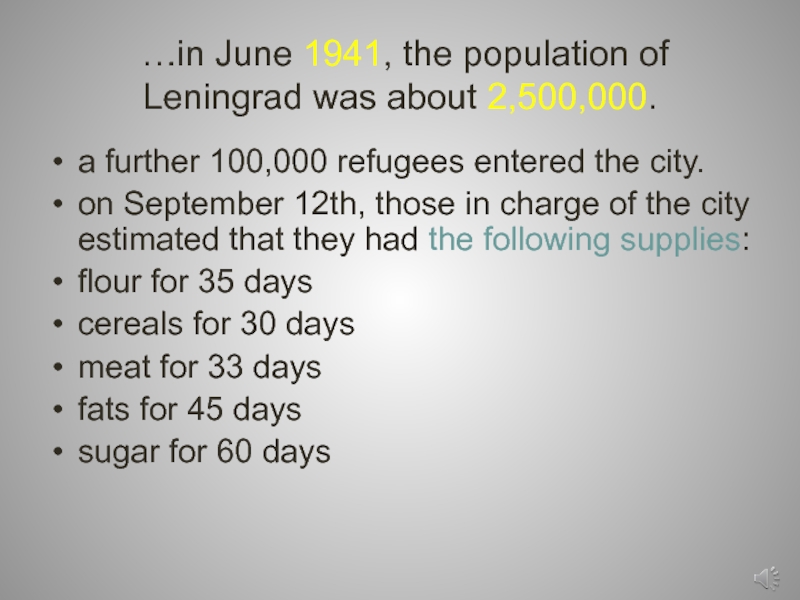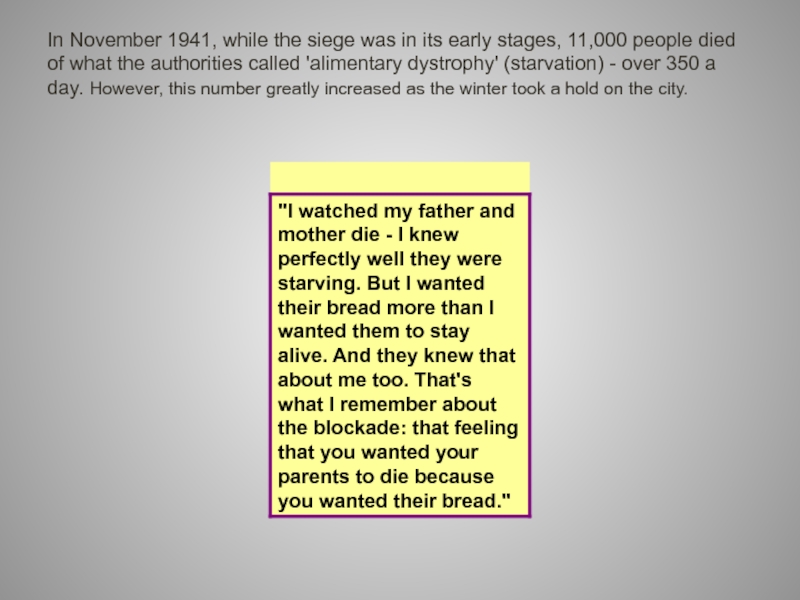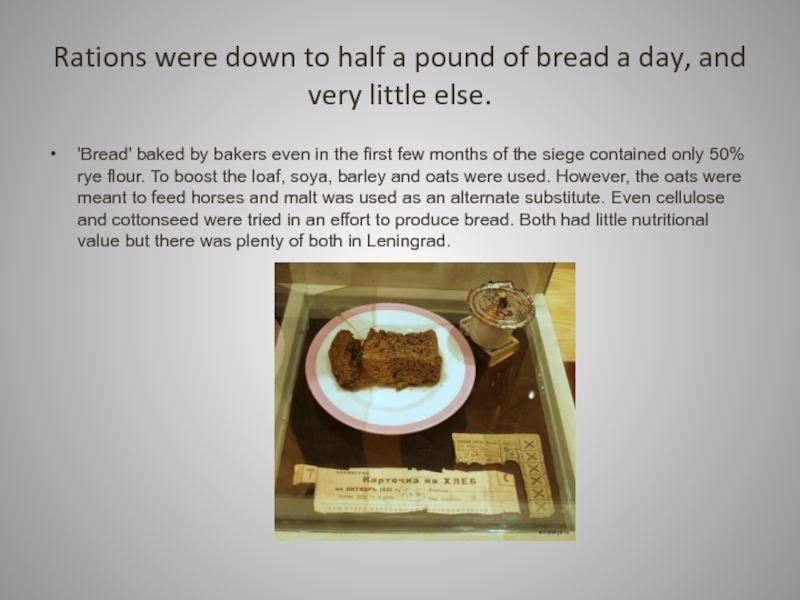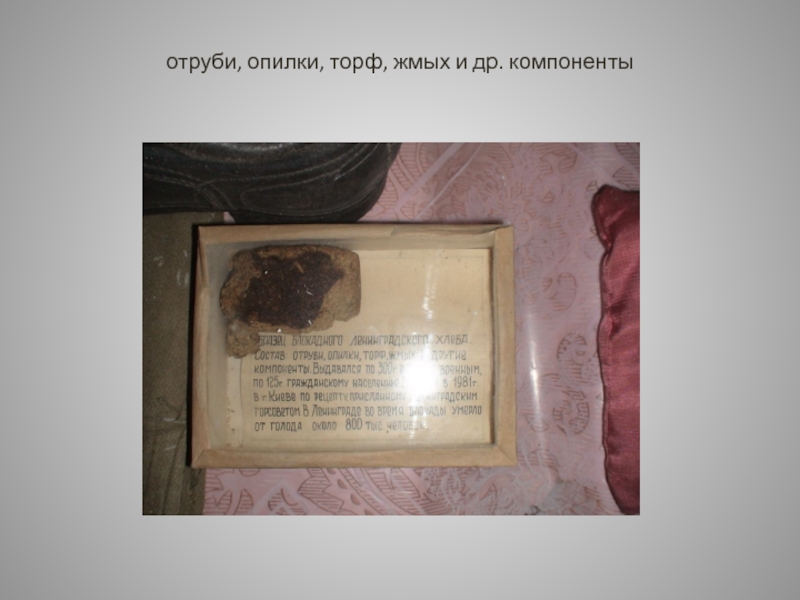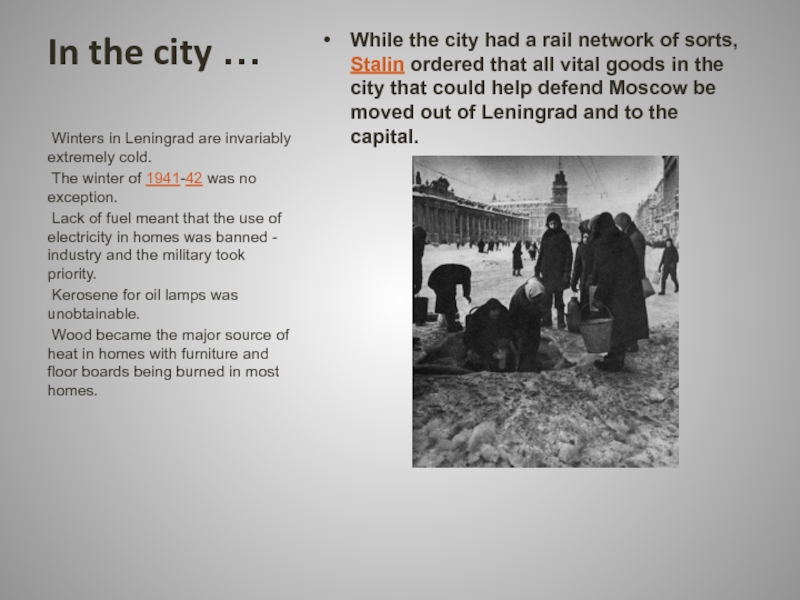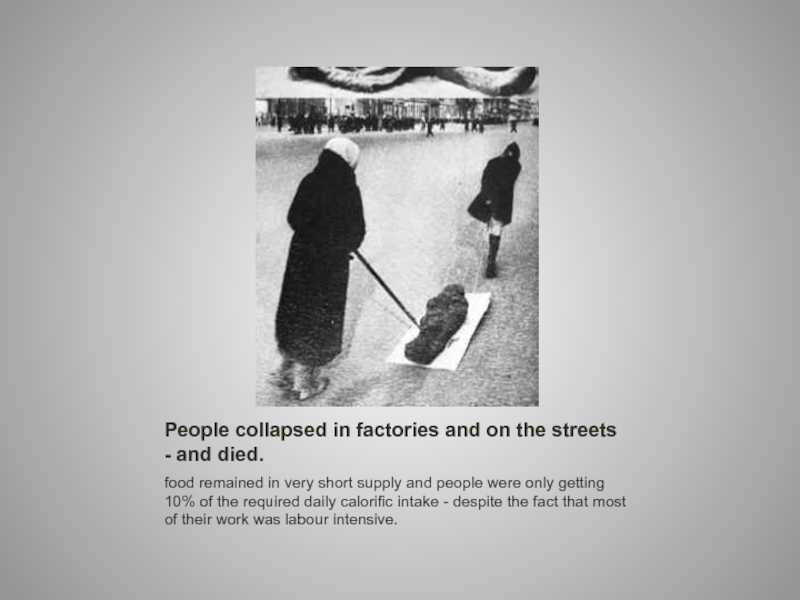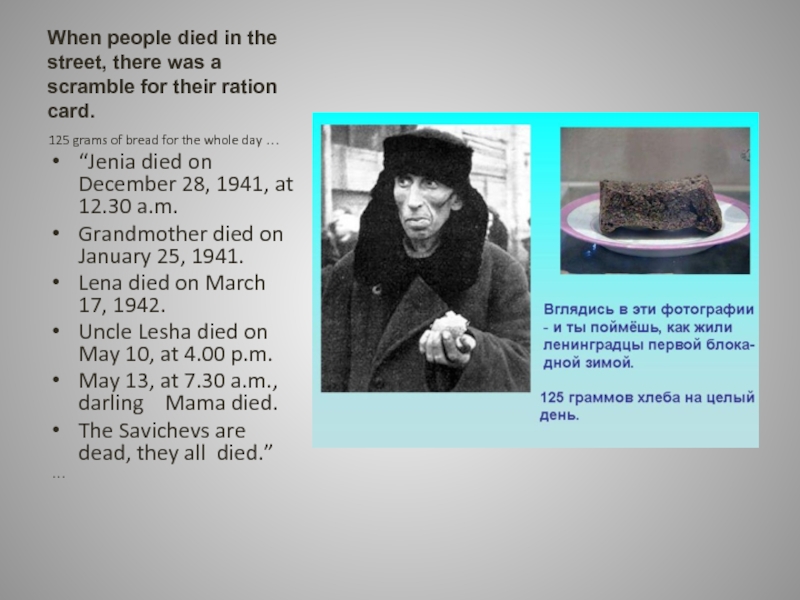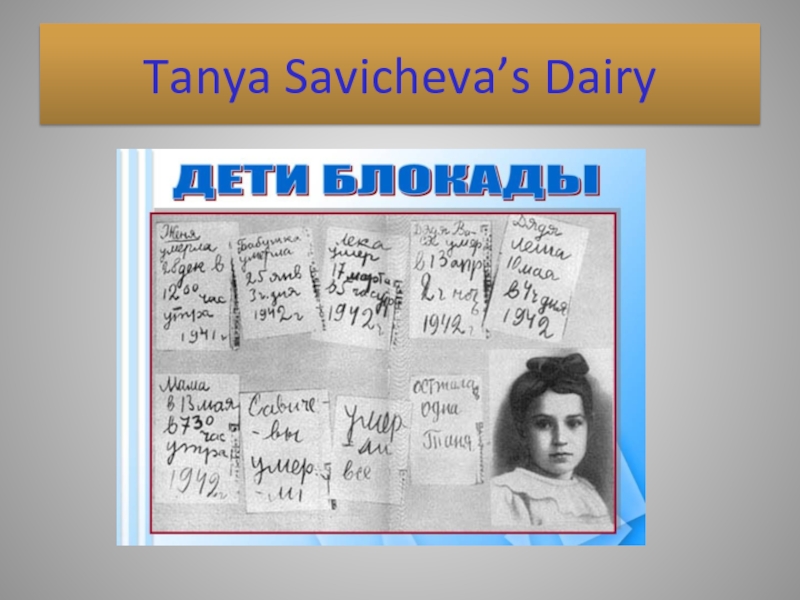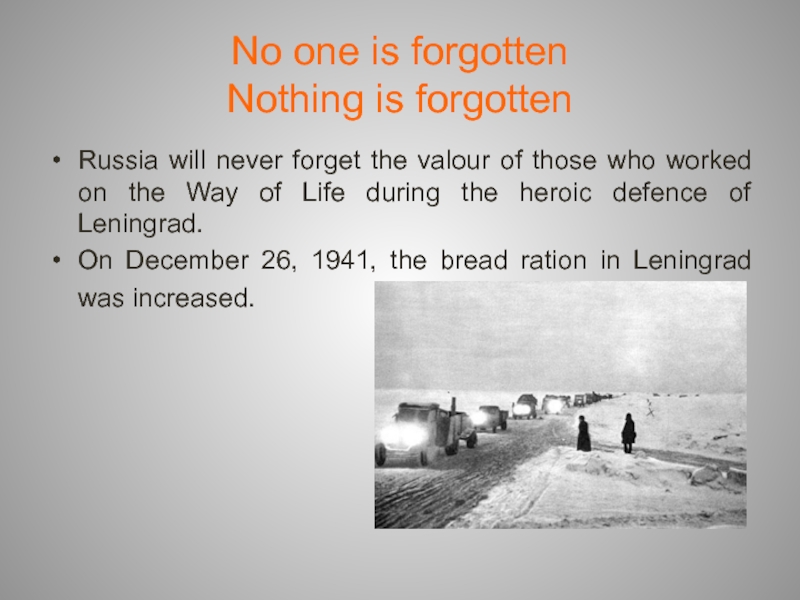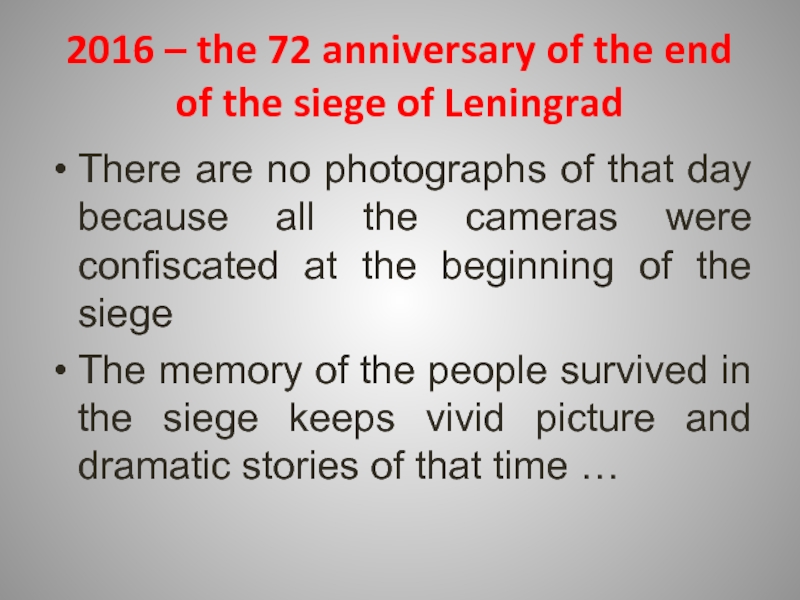- Главная
- Разное
- Дизайн
- Бизнес и предпринимательство
- Аналитика
- Образование
- Развлечения
- Красота и здоровье
- Финансы
- Государство
- Путешествия
- Спорт
- Недвижимость
- Армия
- Графика
- Культурология
- Еда и кулинария
- Лингвистика
- Английский язык
- Астрономия
- Алгебра
- Биология
- География
- Детские презентации
- Информатика
- История
- Литература
- Маркетинг
- Математика
- Медицина
- Менеджмент
- Музыка
- МХК
- Немецкий язык
- ОБЖ
- Обществознание
- Окружающий мир
- Педагогика
- Русский язык
- Технология
- Физика
- Философия
- Химия
- Шаблоны, картинки для презентаций
- Экология
- Экономика
- Юриспруденция
The Siege of Leningrad презентация
Содержание
- 1. The Siege of Leningrad
- 2. …in June 1941, the population of
- 3. In November 1941, while the siege was
- 4. Rations were down to half a pound
- 5. отруби, опилки, торф, жмых и др. компоненты
- 6. In the city … While the
- 7. People collapsed in factories and on the
- 8. When people died in the street, there
- 9. Tanya Savicheva’s Dairy
- 10. No one is forgotten Nothing is forgotten
- 11. 2016 – the 72 anniversary of the
- 12. Internet Resources http://tourbina.ru/common/photo/4934/memo/0/ http://balancer.ru/society/2010/05/t59633,2--18-yanvarya-1943-goda-proryv-blokady-leningrada.9417.html http://shibrey-shool.3dn.ru/photo/8-0-185-3 http://900igr.net/prezentatsii/istorija/Blokada-Leningrada.files/048-Vgljadis-v-eti-fotografii-i-ty-pojmjosh-kak-zhili-leningradtsy-pervoj.html
Слайд 2 …in June 1941, the population of Leningrad was about 2,500,000.
a further 100,000 refugees entered the city.
on September 12th, those in charge of the city estimated that they had the following supplies:
flour for 35 days
cereals for 30 days
meat for 33 days
fats for 45 days
sugar for 60 days
Слайд 3In November 1941, while the siege was in its early stages,
Слайд 4Rations were down to half a pound of bread a day,
'Bread' baked by bakers even in the first few months of the siege contained only 50% rye flour. To boost the loaf, soya, barley and oats were used. However, the oats were meant to feed horses and malt was used as an alternate substitute. Even cellulose and cottonseed were tried in an effort to produce bread. Both had little nutritional value but there was plenty of both in Leningrad.
Слайд 6In the city …
While the city had a rail network of
Winters in Leningrad are invariably extremely cold.
The winter of 1941-42 was no exception.
Lack of fuel meant that the use of electricity in homes was banned - industry and the military took priority.
Kerosene for oil lamps was unobtainable.
Wood became the major source of heat in homes with furniture and floor boards being burned in most homes.
Слайд 7People collapsed in factories and on the streets - and died.
food
Слайд 8When people died in the street, there was a scramble for
125 grams of bread for the whole day …
“Jenia died on December 28, 1941, at 12.30 a.m.
Grandmother died on January 25, 1941.
Lena died on March 17, 1942.
Uncle Lesha died on May 10, at 4.00 p.m.
May 13, at 7.30 a.m., darling Mama died.
The Savichevs are dead, they all died.”
…
Слайд 10No one is forgotten
Nothing is forgotten
Russia will never forget the valour
On December 26, 1941, the bread ration in Leningrad was increased.
Слайд 112016 – the 72 anniversary of the end of the siege
There are no photographs of that day because all the cameras were confiscated at the beginning of the siege
The memory of the people survived in the siege keeps vivid picture and dramatic stories of that time …

